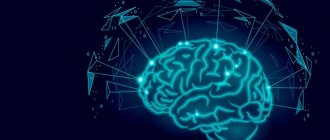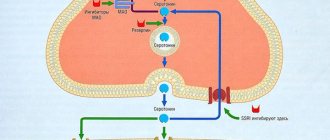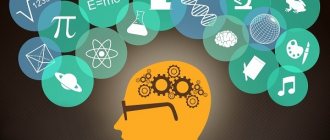When memorizing and reproducing information, a person uses different analyzers. If the musculocutaneous, vestibular and motor were used, it means that at the moment of retaining the necessary material he needed motor memory.
Many psychologists consider it one of the basic ones, since it is thanks to it that we can perform basic actions without even thinking about them and without spending time on mastering them over and over again. We do not learn to walk, type on a computer, make coffee, or drive a car every day. Once we acquire skills, we use them automatically. It is motor memory, or, as it is also called, motor memory, that makes our life so simple.
Types of memory in humans
Simply put, memory is the process of recording, storing and retrieving information. It affects many mental processes of the individual, such as thinking, for example. Memory happens:
- Voluntary - a person forces himself to remember something using his will (develops at the age of 4-5 years)
- Involuntary - does not force.
If a young guy who wants to interest a girl memorizes a love poem by reading it out loud, most likely his auditory memory predominates. If, when telling a question on an exam, a student recalls a page from a note or textbook, then visual memory is his strong point. And if at a dance class a person easily remembers the dance movements, and in addition to this, he works deftly and well with a needle, then such a person has developed motor memory.
A student writes a dictation. The teacher dictates a few words. The student remembers them, immediately writes them down, and immediately forgets them. This is the mechanism of short-term memory. Anything that is remembered longer than this is long-term. The development of memory in adults has its own characteristics, and now let’s return to the development of memory in children and note some of the features of this development.
Memory training in everyday life
To perform the exercises recommended below, you do not need to set aside a special time for exercise, however, they can be performed daily.
- The recommendation to read daily and extract new information from this activity was, is and will be relevant at all times.
- Retelling books you have read is not only a way to motivate those closest to you to read, but also an excellent exercise for training the auditory type of memory.
- One of the best “everyday” techniques for developing the ability to memorize is learning a foreign language, new foreign words, proverbs, and established expressions.
- The same can be said about learning new poems and songs every day.
- An exercise to memorize telephone numbers, license plates of passing cars, etc. is very effective for daily memory training.
- The same applies to remembering the exact dates of birthdays of relatives, friends, colleagues, etc.
- When going to the store, you can keep the list of necessary purchases in your head, of course, keeping a pre-prepared cheat sheet “up your sleeve.”
- When returning from the store, it is useful to remember all the purchases made and their cost.
- When going to bed, it is useful to remember and “scroll” in your head in the smallest detail the events of the past day, right down to what products today’s menu consisted of during the day.
The methods and techniques presented in this article are intended primarily for adults who are personally interested in improving the quality of their memory. If it is necessary to develop memory in children, psychologists and teachers recommend conducting classes in the form of games. Fortunately, today there is enough information about the development of any children's abilities, including improving memory.
But regardless of age, to strengthen memory, absolutely everyone equally benefits from fresh air, good quality sleep and consumption of foods that contribute to improving the functioning of mental processes associated with the impeccable functioning of this still little-studied area of the human brain.
What is motor memory and why is it needed?
This type of memory is nothing more than the ability to remember and then reproduce various motor algorithms accordingly. Without motor memory, it is impossible to learn to ride a bicycle, play volleyball or football, or comprehend the basics of swimming and other physical activities. Movement memory forms the basis of various labor skills, as well as all other adequate motor actions. When subconsciously memorizing movements, a person records everything down to the smallest detail - duration, amplitude, speed, direction. Having mastered entire complexes of sequences of movements, a person can then, without thinking, perform a huge number of everyday manipulations.
Working with motor memory helps develop a child’s coordination of movements, correct motor skills (and the more developed a child’s motor skills are, the richer his vocabulary and communication abilities are, this is the statement of psychologists), relieves nervous tension and tones muscle tissue.
Thanks to motor memory, a child can learn new games, perform logical sequences of actions when practicing on a computer - the resource https://iqclub.ru/ provides a clear demonstration of how this happens, take care of himself, do household chores and everything that is impossible without clear and coordinated body movements. These include hygiene procedures, the ability to use cutlery, behavior in transport and many other aspects of everyday life that every child will certainly encounter.
All children adore lessons on the development of motor memory, since they are nothing more than active games.
Exercises to train motor memory
- Game "You can't do that." A game designed for the conditions of a sports field or hall, where there is enough free space and equipment. The presenter’s task is to show the children various combinations of movements, and the children are obliged to repeat everything exactly after him. However, a ban on some of the movements is introduced. For example: raising two hands up - you can’t do that! The presenter must show various movements at the maximum pace, and can use small tricks and techniques to confuse the participants - grimace, make funny sounds. Participants must be fully concentrated so as not to repeat a movement that is not allowed. The minimum number of participants in the game is two, one shows, the other repeats.
- Game "How to remember movements." The lesson is very similar to a traditional physical education lesson. Just like in the previous game, it is best to sit on the sports ground, take balls and jump ropes with you. The presenter shows an exercise or a set of exercises, but remains silent. Children must remember the sequence of figures only through visual contact and try to repeat them accurately. Through repeated repetitions, each child should master the entire cycle.
- "Get to the point." For this exercise you will need one sheet of paper and a pencil for each participant. Children should sit on chairs facing the wall, on which a piece of paper should be fixed at eye level. Next, close the eyes and draw a dot anywhere on the leaf with a pencil. We lower our hands, our eyes are closed, count to five and draw a dot again. The smaller the distance between the two depicted points, the better the motor memory. With regular training, the points will be aligned. Further, the exercise becomes more complicated; the task is to draw two, three or four dots with your eyes closed and duplicate them.
- "Lines". This exercise is similar to the previous one, but it is necessary not to hit a point, but to draw lines of the same length with your eyes closed in order to develop a sense of distance as a component of motor memory. It is better to draw lines in different directions - oblique, straight, the main thing is that they are as close in length as possible. I drew one line, lowered my pens, counted to 5 and then the next one. Over time, you can draw two or three lines of different lengths, and then try to repeat the experiment. Shake your hands between approaches, creating so-called “motor interference.”
- Dance lessons are recognized as the best for the development of motor memory in children and adults. Therefore, dance with pleasure and benefit.
The main characteristics of motor memory are accuracy of execution, volume - how many sequences you can remember and accurately reproduce, strength - how long the data will be stored in memory, stability - how much interference will affect the accurate reproduction of actions.
Features of motor memory
This species is responsible for all motor processes, from basic movement in space to complex physical exercises.
Like all other types of memory, motor memory depends on many factors and is prone to forgetting. However, the process of forgetting movements is slow, and when repeated, the memory is quickly restored. For example, if a person has learned a dance and hasn’t performed it for several months, he will forget many of the movements, but if he repeats it a couple of times, he will remember.
Also, motor memory can exist offline. For example, having learned to walk, eat with cutlery and perform many other actions, a person carries them out without thinking.
There are several criteria that determine its quality:
- Accuracy is a criterion that shows how deftly movements in space are.
- Volume is a certain amount of memorized, stored and reproduced movements.
- Stability is a criterion that shows the accuracy of certain actions performed.
- Strength.
It is these criteria that formed the basis for the evaluation system for athletes’ performances at various competitions.
Exercises for training
Motor memory, like any other, is trained through special exercises. Let's look at some of them:
- You need to sit on a chair near the wall, where there is a blank sheet of paper with a dot in the middle. With your eyes closed, you need to count to five and put a dot with a pencil in the place where you think the middle of the sheet is. This exercise must be repeated periodically, but regularly. In this way, in the process of training motor memory, the distance from the middle of the sheet will decrease. In the process of improving results, it is necessary to gradually increase the number of points and the pause time between drawings.
- It is necessary to draw lines of equal length with your eyes closed. Next, measure their length and try to repeat if the lines are very different. They need to be drawn in different directions.
Such exercises are quite simple, but with regular training they can make motor memory more flexible. This can help you learn new physical skills, gain more precise coordination in space, and even affect your learning ability.
Concept of motor memory
This type, according to the definitions of psychological dictionaries, is responsible for memorizing various types of movements of a wide degree of complexity and reproducing them offline or at will.
The type of motor memory influences the formation of such important human qualities as the ability to master various physical systems (walking, writing, work skills).
Roman's story about the development of his memory
My friend Roman did not always have a good memory. It took him a long time to learn a school poem. Even if he sat at textbooks all evening, this did not always bring positive results in memorizing information.
After school we entered the same university. After some time, I began to notice that Roman became more attentive and receptive to his studies. After a couple of months he was unrecognizable. He easily remembered complex definitions and formulas studied in pairs.
I wondered how he was able to achieve stunning results so quickly. Roman spoke about the method of developing his own memory. His complex included exercise, periodic rest and frequent walks in the fresh air.
After trying this technology on myself, I also began to notice improvements in brain function. This article will tell you more about how to improve long-term memory.
Educational games
There are many games that can develop motor memory in children.
For example, the game “Repeat after me”, which is based on the fact that the child must quickly repeat the movements of the leader. Preferably with music.
Or the game “Forbidden Movement” develops processes of this type of memory well. The essence of the game is to also repeat the movements after the leader, except for one prohibited one. This movement is shown to the child in advance so that he remembers it.
Also, many played “Edible-Inedible”, when the child must catch a ball based on the names of edible products, and when something inedible is mentioned, hit it with his hand. This game, in addition to reflexes and reactions, develops the child’s knowledge about objects. Games for repeating a drawing also develop memory well, which in the future can become the basis for mastering writing.
In addition, nothing develops motor memory better than sports activities. Gymnastics, tennis, football and other active sports disciplines are capable of developing and correcting the presented type of memory.
That is why it is so important not to neglect physical activity, to spend more time in motion and in the fresh air, which is useful not only for motor processes, but also for the health of the body as a whole.
What exercises for developing the memory of preschoolers exist today?
- For example, you can try to develop motor memory. Call the game “repeat the move” and invite your preschooler to play it together. The meaning is simple. You show the movement, and the baby repeats it after you. Start with the simplest ones, and in a couple of weeks you can create and learn your own dance! It's fun and exciting for both children and parents!
- Most children love to draw. Use this hobby to train your preschooler's memory! Place a piece of paper and a pencil in front of your child. Ask him to listen to the words you say and sketch them on paper so that they are easy to remember. Start with a dozen words. Give your child time to sketch what he hears.
- Even for the youngest children, experts have developed exercises to develop memory. They are aimed at developing emotional memory. The mechanism is simple: positive emotions help young children remember information better. There are a lot of exercises for this: these include finger games, home puppet theater, and pantomimes.
- Recommendations for the development of memory in preschoolers also concern its verbal and logical area. For example, scientists do not recommend talking to a baby in diminutive, distorted words, as this impairs memory development. As for tasks for the development of memory in preschoolers, you can learn songs together, make up your own fairy tales based on some picture or photograph, and describe what you see while walking. It will also be useful to discuss the cartoon or book you just watched.
- There is another means for developing memory in preschoolers. Try to prepare 10 pairs of words in advance. For example: sky-cloud, tree-leaf, dog-cat, and so on. Ask your child to remember each pair of words you say. Give your baby a chance to prepare: say paired words at intervals of 5 seconds.
- Separate methods also exist for the development of figurative memory in preschoolers. In the future, this will improve not only the memorization process, but also help the child better navigate in an unfamiliar environment, and will also serve as an impetus for the development of creative thinking.
- The little ones can be given tasks for sound memories. For example, ask your child to tell you how a cat meows or how a dog barks. You can also use taste sensations: ask your child to tell you what ice cream, an apple, or his least favorite porridge tastes like. Experiment with tasks: the more varied they are, the more interesting it will be for both you and your child!
As you can see, there are many ways to develop memory in preschoolers. Some exercises train individual skills, while others are designed to train memory in general. You can study both at home and on a walk, or you can talk with the teacher and include such lessons in daily tasks in kindergarten. Another feature of memory development in younger and older preschoolers is the need for variety. Do not choose just one exercise from the list provided. Choose at least a few. And it will be much more interesting if you come up with your own: the wider the list, the more likely it is that the child will perceive such methods as an interesting and fun game, and the more clearly the effect of this kind of activity will be manifested.
At the same time, do not forget about consistency. Try to devote exercises to develop the memory of preschoolers several days a week.
But here, too, it is important to maintain a golden mean. Do not spend too much time on exercises: 15-20 minutes of play will be more than enough, and the child will not have time to get tired
The role of memory in human life
What is the main purpose of motor memory? Why is it necessary:
Formation of basic human skills: writing, walking, swimming, which we learn in childhood. It is important in professions where precision and speed of movement are required: surgeon, jeweler, etc.
It is very important for athletes, dancers, drivers and musicians to develop motor memory in order to perform actions automatically. Allows you to concentrate not on actions, but on information
For example, when typing text on a computer, a person focuses not on the keys, but on the information. Used to improve thinking processes, it frees up space for fresh tasks.
Impairments of the type of memory in question
Underdevelopment or impairment of motor memory is a serious problem that can greatly affect a person’s quality of life.
With severe impairments, a person may have problems moving in space and self-care. It will be difficult for him to exercise and master dance movements.
As a rule, some motor memory disorders can affect not only autonomous movements, but also the quality of writing and reading. A person with this problem has a more difficult time learning. He often makes basic grammatical mistakes and confuses words when reading.
Most often, this leads to such a specific and very unpleasant disorder as dysgraphia. And in more severe cases - to agraphia, that is, a complete inability to master the principles of written speech.
How to independently develop long-term memory
There are a number of exercises to improve your abilities. By performing them, the result will not be long in coming. The following points will tell you how to develop long-term memory:
Repetition. First, start memorizing poetry. This material is the easiest to remember. Then start memorizing prose. At the same time, having learned one paragraph, do not repeat it for 3-4 days. Then read it again and see that you perceive the text differently. Repeating out loud. It has been scientifically proven that hearing accompaniment promotes better learning. Therefore, when studying any text, read it out loud. Repeating out loud with your eyes closed will be especially helpful. This way the text will be remembered even faster. Concentration of attention. To complete this exercise, write down the sentence on a piece of paper. Then read it out loud, and as you read, try to count how many “a’s” there are in the sentence. Then turn away and try to remember how many “p”s there are in the sentence. This training further develops visual memory. Drawing up associations. If you have trouble remembering even basic information, start making up associations. For example, numbers can be associated with a significant date or similar figure. Also with a name. It will be easier to remember the name if you associate it with some famous character. Daily training will help you develop quickly. Description of the picture. To do this, select several paintings and describe them. Each time, add new facts to the picture, while taking into account secondary sounds, screams, communication, noise. Visualization and creation of mental images. For better reproduction in the future, try to mentally imagine the picture. For example, imagine forgotten keys on the nightstand, remember in detail what else was on it. And so complementing the picture with new images from memory. Creating to-do lists. When leaving home on business, make a list of planned tasks
Distribute them according to importance or convenience of the route. Having run through all the things in your head, go
When you arrive home, check the list to see if you managed to remember and complete everything. Try to remember what you have forgotten on your own. There are often times when important information slips out of your head at the right moment. Don't rush to look for a hint. Try to remember it yourself. This information is already stored in the head, all that remains is to find it. Studying the exact sciences. If you get bored on the bus or subway, start doing simple arithmetic calculations in your head. Add up all the numbers of the phone number on the advertisement, multiply the numbers of the license plate of a passing car. It would seem that these are simple examples, but they are great for training your memory. Read books. Books, especially educational ones, force the brain to turn on the imagination and remember the information received. What could be better than spending a free evening reading an interesting book? Scroll through your head all the events you lived during the day. Before going to bed, scroll through the whole day from waking up until the evening. Then think through all the events from evening to morning. Remember what useful things you did during the day.
Developing long-term memory does not require any effort. The main thing is to do these simple exercises every day and you will no longer have to stand at the right moment and painfully remember important information.
Types of memory
Psychologists classify memory into the following types:
- Visual type. If this type predominates, a person will remember the information received better if he has the opportunity to see the event with his own eyes or read the information in some source.
- Auditory type. When the auditory type predominates, it is enough for a person to hear once, and he will be able to reproduce the information he heard even after some time. Thus, for people with a more developed auditory type of memory, for better memorization of texts, it is recommended to speak them out loud.
- The motor (motor, tactile) type assumes a person’s ability to “automatically” remember all frequently performed actions. For example, when confidently driving a car with a manual transmission, it is this type of memory that works, exactly the same as in the case of text writing skills. If the motor type predominates, the individual needs associations with motor physical activity. So, for example, having excellent command of the “blind” typing method, it is quite difficult for a person with a motor type of memory to reproduce on paper the entire sequence of letter placement on the keyboard until he begins to remember where each letter is located using hand movements.
- Mixed type. In this case, there is no single priority method of memorization, but two types are actively used or (which happens much less frequently) the memorization abilities are distributed evenly across all types of memory.
In addition, there are short-term and long-term types of memory.
The short-term type occurs as a result of a reaction to ongoing events and can be stored in the head for no longer than 3 months. At this stage, the obtained data is analyzed and at the level of the work of brain neurons, a decision is made on whether or not it is necessary to “transfer” this information to a long-term type. Thanks to this property, the human brain is not filled with irrelevant information.
The long-term type ensures the preservation of information for a long time, often throughout life. All available information in long-term memory can be reproduced an unlimited number of times. This type of memory allows you to recall the necessary information at the right time and apply the available information in life.
For each person, the predominant type of memory depends, first of all, on individual characteristics. This parameter is considered innate and does not change throughout life. And knowing exactly which type of memory is most developed, you can not only remember the information received with great success and use it in professional or everyday activities, but also develop memorization abilities and train memory in “weaker” areas.
Reasons for violations
There are many causes of motor memory impairment. Most often, this is a consequence of any damage to parts of the brain due to injuries, circulatory problems, tumors and other pathological processes.
Children and adults with such disorders must be observed by a neurologist and defectologist.
Exercise for accuracy and precision of gestures
- Mount the sheet either on the table or on the wall.
- Place your elbow on the sheet, then lower your forearm and hand.
- Close your eyes.
- Without raising your elbow or using your wrist, make a circular motion with your forearm and draw an arc on the paper.
- Return your hands to the starting position and draw another arc. They must match.
Motor memory plays an important role in our life, and maybe even one of the main ones. With its help, all our actions are meaningful. When you are rollerblading in the park with friends, typing a comment on this article or racing along the track - remember that you owe all this to just one small function of our smart body, which conscientiously fulfills its duties. If you want to live a meaningful life and remain cheerful and active until old age, help your body and mind! Do everything in your power to keep it working as long as possible!
Why train your memory
Developed memory makes it easier for a person to remember information, for example, at school. Memory is like a muscle - it strengthens with training.
Memory development in preschool children, exercises for older people can be compared to exercise in the gym. For example, a person is given the task of lifting 100 kg on a bench press. A regular exerciser will lift weights immediately or after several days of physical activity. For people who have never exercised, it will take several weeks or months.
Fortunately, there is a big difference between training in the gym and improving your memory. It lies in the duration of classes. If you want to be a successful bodybuilder, you need to train several hours a day for a couple of years. To train your memory you need to spend 5 minutes a day.
Purpose and benefits
The memorization process follows a pattern. First, an image is clearly imprinted and stored for 0.1 - 0.5 seconds. Then, particularly important elements are selected from the acquired knowledge and entered into a short-term database. Without repeating material, data is stored for no more than 30 seconds.
There are types of short-term memory, depending on the source of information:
- tactile;
- taste;
- olfactory;
- visual;
- auditory
People receive basic information through their eyes and ears. Therefore, the last 2 types are the most valuable, and they are the ones that need to be developed.
The amount of information that is stored for a short period of time is limited. A child is able to remember 5-7 elements, an adult 7-9. But it is necessary to understand that this value is purely individual and directly depends on genetic qualities.
Unnecessary information is immediately erased, important information is transferred to operative or long-term memory. The main advantage of short-term memorization is that unnecessary information is filtered out and only the essence is retained.
This allows you to save time, remember what is really important, and avoid information overload - a source of anxiety and stress. Training means teaching the brain to focus on a task and not overload it.
Forms of information storage
We remember some actions throughout our lives, while others we forget the next day. Memory can be short-term and long-term, involuntary and voluntary:
- Short-term motor memory - movements are remembered for a short period of time. For example, while dancing, you learn new movements, they go into the temporary storage department, and if you don’t repeat them from time to time, they will be completely forgotten, and if you repeat them, they will go into long-term memory.
- Long-term – actions last a long time, or for life. For example, the ability to walk, jump, run.
- Voluntary memory - learning occurs through deliberate effort.
- Involuntary – automatic memorization.
Mechanism
Motor memory in psychology is the highest mental function, a psychophysiological process based on the activity of the central nervous system. By memorizing and then reproducing certain movements, a person uses the activating reticular system (ARS) and motor analyzers.
The activating reticular system is like a mesh that spans the entire brain stem. When a person sets himself the task of remembering or mastering some movement, the signal about this first of all comes to her
It determines the degree of importance of information and either sends it further, to the cerebral cortex, or blocks it
For example, you are watching a dance performance on TV. You would like to learn his steps, and this desire is captured by the APC neurons. However, the motivation is not strong, the situation is not the same, so the signal is slowed down - and you are left to sit further on the couch and enjoy the TV show
If you have set a specific goal for yourself, specifically freed up time, dressed appropriately, downloaded a video with a master class and plan to learn this dance, ARS records the importance of this material for you and sends the signal further, to the cerebral cortex
After this, the motor analyzer, which is located in the frontal part of the brain, comes into operation. At the same time, the hippocampus, which is responsible for storing information, is activated in the medial temporal regions. At the same time, the vestibular apparatus and muscular system begin to work (therefore this function is called psychophysical). Training begins, you learn dance steps by watching videos multiple times and doing a lot of repetitions - this is how you fix and save the movements you need. In the future, when they are played back, the same parts of the brain will be turned on again, but the signal will go along the beaten path. This will ensure the speed and automation of the actions performed.
Functions
At home
The main purpose of motor memory is the development of everyday skills that ensure the full existence of a person from childhood. They are taught to a child from a very early age so that he can take care of himself. Throughout life, they are constantly supplemented with new ones (we learn to eat with chopsticks, use a Smart Touch refrigerator, etc.). The following elementary actions can be cited as examples:
- wash;
- brush your teeth;
- dress;
- eat (hold the box, pour soup or tea);
- basic culinary skills (cutting bread, making a sandwich, adding salt);
- cut nails;
- comb;
- make the bed;
- clean shoes;
- sew on a button.
All these are self-service skills, which it is motor memory, not reflexes, that allows a person to acquire. To us adults, all this seems so simple and elementary that we are perplexed: how can you not master this? But remember how you taught your baby to brush his teeth for the first time and how then you rechecked for a long time whether he was doing it correctly. After all, it didn’t happen right away. Or think about those affected by Alzheimer's disease—the hippocampus is severely disrupted and previously established neural connections are lost. This is why these people lose self-care skills - their motor memory no longer works.
In everyday life, motor memory turns out to be necessary even at the time of mastering a new device. If you bought a refrigerator, microwave, coffee maker, vacuum cleaner, tablet, dishwasher, you need to read the instructions and learn how to use them. If similar equipment was previously in the house, the old neural connections are triggered, and automatically the hand itself plugs the cord into the socket and presses the button. However, some models are very different from each other, and motor memory must be adjusted in accordance with the new recommendations.
Associated with such motor skills is a phenomenon that psychologists call “old is better than new.” When old appliances are replaced with modern ones, it seems that the first one was better, despite the fact that the latter has more functions and looks much more stylish. Such negative impressions are associated precisely with the restructuring of those neural connections that have already been built to use the old device. As soon as the instructions and design of the new equipment are mastered, it will seem to you the best and most convenient to use.
In training
Motor memory is essential in the learning process. Psychologists say that for first-graders it is the leading one, as it allows them to master writing. But in order for this process to be successful, it is necessary to develop fine motor skills in the child’s hands from an early age, since motor analyzers are located next to speech analyzers.
In parallel with learning to write, the child activates motor memory primarily in technology lessons, where fine motor skills of the hands continue to be developed. Examples of activities:
- modeling from plasticine, clay, dough, plaster;
- origami;
- embroidery;
- sewing soft toys;
- pictures of cereals;
- pasta applications;
- paper and plastic;
- mosaic;
- crafts made from natural materials.
In physical education, motor memory allows children to master new sets of exercises and the rules of team games. To further develop it, parents are recommended to enroll their child in sports or dance sections already in elementary school. At an early age, the central nervous system is still maximally plastic, so a 6-year-old child will remember the same dance steps faster and reproduce more accurately than many adults. It has been proven that motor memory, which underlies most skills, is one of the most long-lasting. Most often, a person with complete amnesia can dance a waltz that he learned as a child from beginning to end, but will not remember his name.
The importance of physical education in the life of both children and adults is difficult to overestimate. The better it develops motor memory, the more actively the muscle analyzers work, the better the vestibular apparatus is formed - and all this has the most positive effect on health.
In professional activities
Without motor memory, a person would not be able to master most professions. The driver needs to learn which pedal to press and how to turn the steering wheel. For the secretary - how to quickly type text. Each specialty involves skills that become automatic over time. For some this is vital. It has already been said before that someone’s life depends on one wrong move by a surgeon. The same can be said about electricians, stuntmen, and sappers.
Some professions are not considered dangerous, but poor motor memory is fraught with consequences for them too. Imagine what will happen if a nurse makes a mistake in some movement when giving an injection; a jeweler cutting an expensive diamond; a plumber repairing a water supply system; train driver or pilot during the journey. Most accidents occur due to mistakes like these. Motor memory is not always to blame. Sometimes the neural connection does not work under the influence of other factors - fatigue, inattention. For young specialists, this sometimes happens due to the fact that the professional skill has not been fully mastered.
How to make memory training effective
So, there are a huge number of methods and trainings dedicated to improving memory skills. The icing on the cake will be advice, following which the learning process will become more productive.
- Interesting material is remembered much better than boring, incomprehensible text.
- Information is remembered more clearly if it is simple, clear and can be structured.
- When memorizing the material you read, you need to carefully delve into the meaning, read it several times, breaking it into conventional fragments.
- Information in a familiar area is remembered better than information that is encountered less frequently.
- Constant repetition is the key to remembering more information.
- Between the processes of studying and repetition, you need to observe pauses, give rest to the brain and the body as a whole.
- It’s easier to remember by drawing parallels and associations with familiar objects and phenomena.
- The information received must be spoken out loud.
- Reading books and memorizing poetry will definitely be beneficial.
- You don’t need to cram, but understand the meaning of what you’ve learned.
- Learning foreign languages will not only improve your memory, but will also be useful in future travels.
Memory is a unique and irreplaceable process. This is a “muscle” of the brain that can be improved with constant training. Developed imagination, good motivation, perseverance and attentiveness will guarantee a good result, and the selection of interesting information and regular repetition will make training more effective. The main thing is not to be lazy, to remain consistent. Using various techniques helps you choose the right one and develop your memory. Memory training is everyone’s business, but if you put in the effort, there will be a result.











